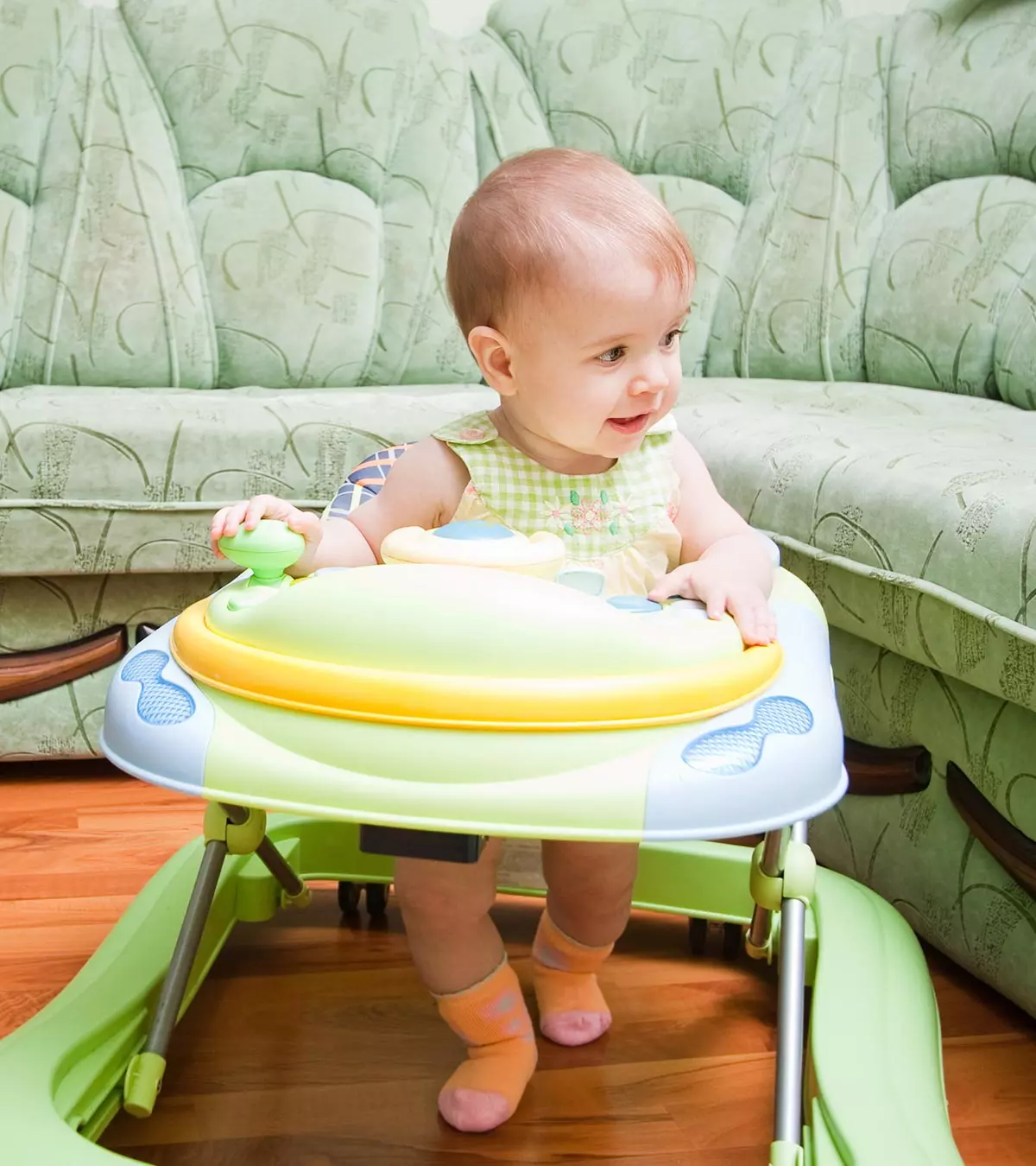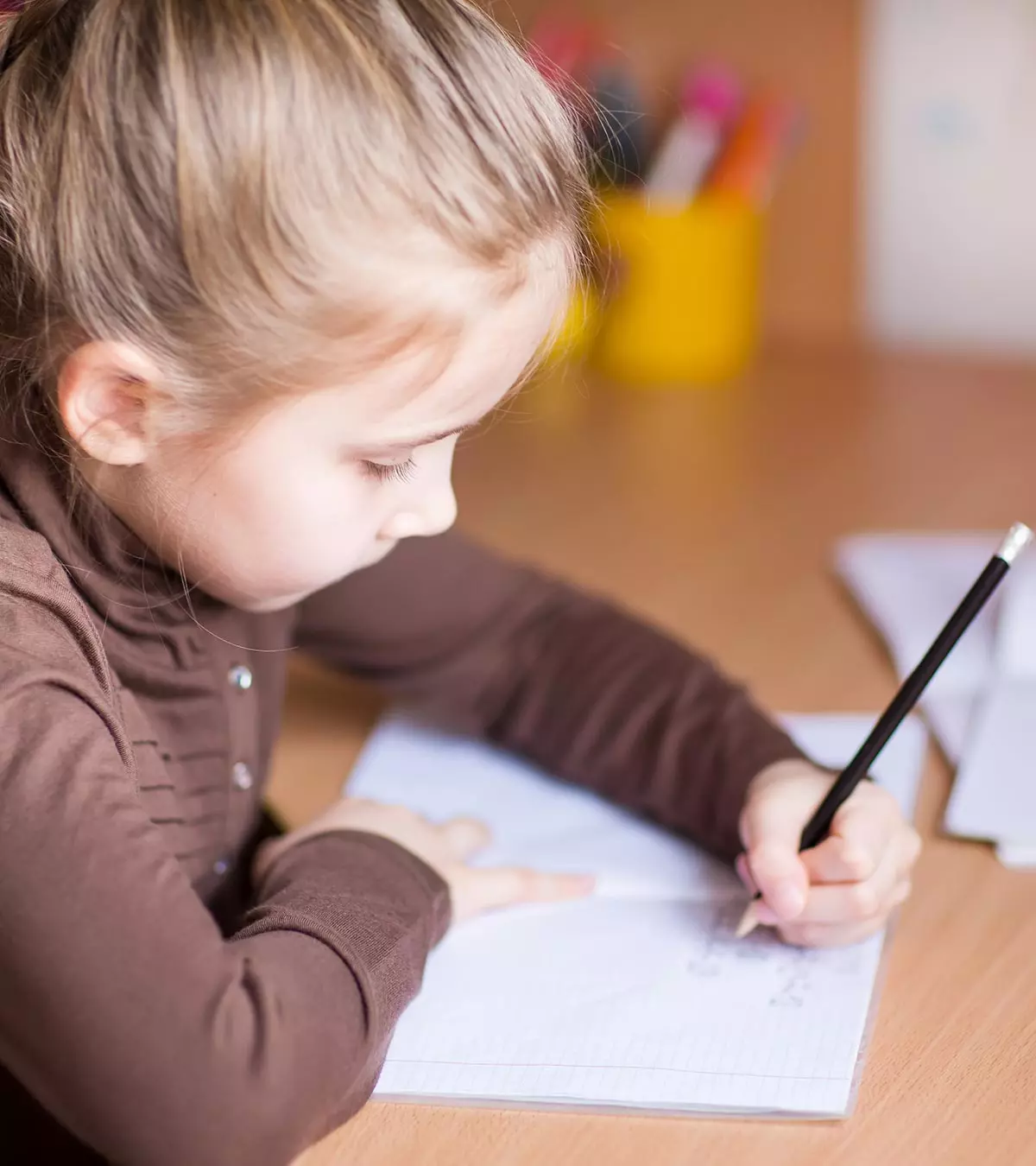
Image: Shutterstock
Developing reading, writing, and other fine motor skills is an important part of a child’s developmental process. However, if you have a left-handed child, you may be wondering how to teach them to write.
Left-handedness may not be as common as right-handedness, but it is quite normal. So you could teach them to switch to their right hand if they are more comfortable with the latter. Alternatively, you could try various effective techniques to help them use their left hand for different day-to-day tasks such as writing and improve their penmanship.
An important thing to remember is to never force a left-handed child to be right-handed. Forcing a lefty to be a righty messes with their brain. It makes the creative side lazy and boosts the side that’s into facts and logic. This mix-up affects how they grow up and makes it tough to adapt. Using the wrong side too much messes with their true potential and might create an imbalance between being creative and logical. Wasio Ali Khan Abbasi, a student and writer, was born lefty, which his mother noticed early and forced him to use his right hand more. He says, “It was confusing for me at first but then a lot of unexplained habits began to fall into perspective such as attempting to pick something heavy from left-hand and then switching to right, preferring to chew food at the left side of mouth, skipping step while climbing stairs in order to land on the other foot etc. I often thought myself clumsy whenever something happened and didn’t thought it amiss until I discovered I was left-eye dominant a few years before the above-mentioned family gathering (i).”
Scroll through this post as we have provided a list of ways to help you teach your left-handed child to write.
Key Pointers
- Parents may attempt to alter their child’s hand preference to right-handedness before the age of six, as hand dominance is not fully established until that time.
- Children should be taught to hold the pencil correctly using the “tripod” grasp of the thumb, index finger, and middle finger.
- Proper finger positioning for writing should be taught by placing the finger slightly higher than the tip of the pencil.
- Left-handed children do not require special writing equipment, but they should use left-handed scissors.
- Using appropriate equipment and a comfortable writing surface can help left-handed children avoid discomfort while writing.
Some Possible Early Signs Your Child Might Be Left-Handed
It isn’t easy to recognize hand preference in young babies unless they are old enough to pick up toys. Signs of left-handedness might be understood when the baby is about three months old and starts putting fingers in their mouth. They might also rely on the same hand to reach desired objects. However, hand dominance starts to show when the babies are around 18 months old and is more developed by three years of age (1). However, being left-handed might also be hereditary in some cases (2).
How To Teach A Left-Handed Child To Write Letters?
If your child is left-handed, they won’t be much different from their right-handed contemporaries. You may worry that writing with the left hand or being more comfortable in mainly using the left hand for pencil grip and various tasks could cause difficulties for them. However, with a little practice and some effective tools, you can make it easy for them to write with their left hand.
Tips For Teaching A Left-Handed Child To Write
Here we talk about 10 effective tips on how to help left handed kids to write to make it easier and more enjoyable for both you and your child:
1. Hand Dominance Does Not Fully Develop Until Age Six:
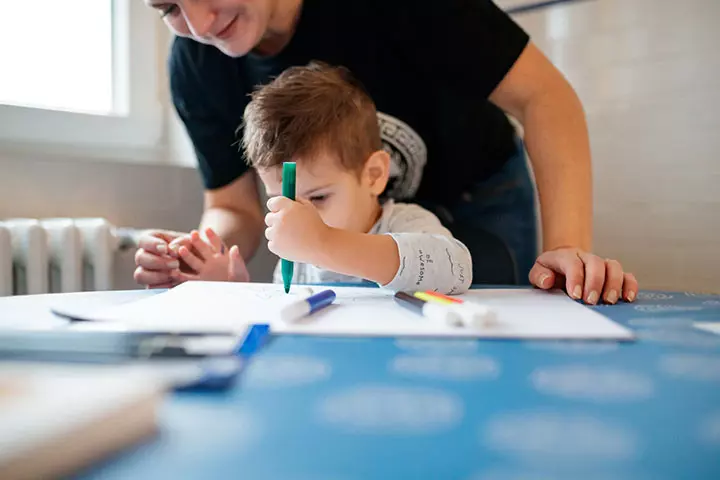
Image: IStock
If your child exhibits a preference for writing using their left hand, you can still try and help them to be a right hander before they turn six (3).
- Until the age of five or six, your child’s hand dominance is yet to develop fully, making it possible to change preferences.
- Remember that while trying to ‘change’ your child’s hand preference, you should not force them to switch.
- You can allow them to use both hands and see which one they use the most. If they still use the left hand more, ask them to try using the right hand instead. Instead of getting angry or shaming them, show patience and offer encouragement and try to make it like a game.
2. If Your Child Is Left-Handed, Make Sure They Can Inform Others About It:
Sometimes, even if your child is positively left-handed, teachers and other caretakers may provide guidance and try to switch their pencil to the other hand.
- In class, teachers could assume that the child is right-handed and change the pencil from left to right.
- Teach your child that they are left-handed. It will help them notify the teachers at school.
- If teachers force children to use their right hand to write, it could significantly affect their handwriting and academic performance.
- If the teachers are made aware that the child is left-handed, they can instead focus on improving handwriting for kids.
 Research finds
Research finds3. Teach Your Child How To Grasp The Pencil Properly:
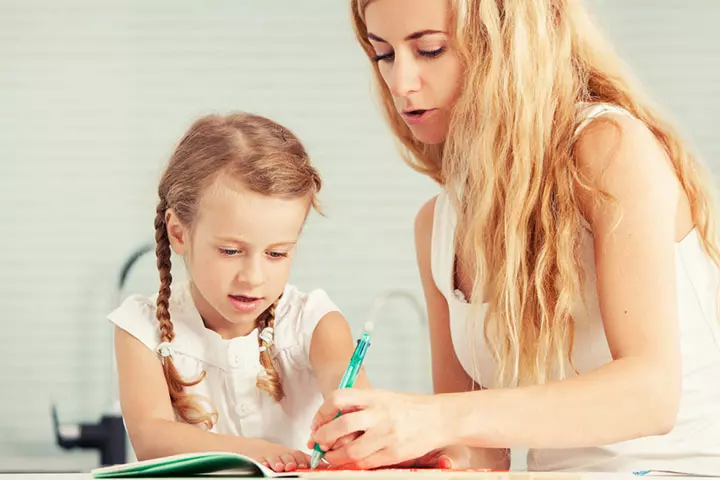
Image: Shutterstock
If your child is left-handed, the best way for her to hold the pencil will be by practicing the ‘tripod’ grasp (4).
- Show your child how they can write best by using the tripod grasp pencil grip. Using this technique, the correct posture would be to pinch the pencil using the thumb and the index finger and rest it on their middle finger.
- It will help them develop dynamic finger movements and also develop a proper wrist position and grip strength.
- As they grow older and has to write more, practicing the tripod grasp now will help her write faster and more legibly.
4. Teach Your Child To Hold The Pencil In Tripod Grasp With Proper Positioning:
Once your left-handed child perfects the art of holding the pencil in the tripod grasp, the next step is to teach her the proper finger positioning (5).
- As your left-handed child starts writing using the tripod grasp, guide her to move her finger slightly higher than the tip.
- Doing so will allow your child to see what she is writing, and she will not have to hook her wrist to see what she writes. Placing the finger a little higher than the tip will also prevent any smudge marks that she may otherwise create while writing.
- If she feels it difficult to remember the same each time he writes, you can help her by wrapping a tape at the level on the pencil above which she has to place her finger.
5. Special Writing Equipment Not Required Unless Specifically Recommended:
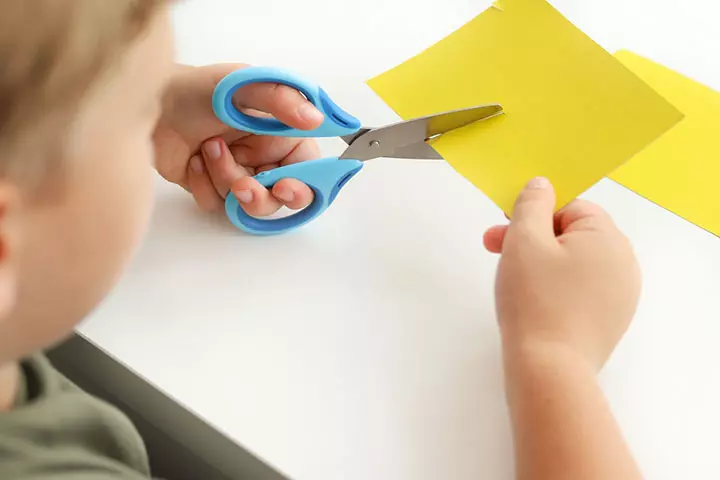
Image: Shutterstock
Unless a specialist or therapist recommends special writing equipment for your child, there is no need to buy one.
- Your left-handed child can as easily grasp the same pencil as a right-handed child can. There is no need for you to buy her special writing equipment that may be made for left-handed children.
- The same rule may not apply to the use of scissors, and it is important that you allow your left-handed child only to use special left-handed scissors. The blades in the different types of scissors, left or right, are positioned differently.
- If your child uses the left-handed pair of scissors, it will let them properly see where they are cutting. It will also avoid any mess or accidental bending of the paper that can happen if your left-handed child uses a right handed scissor.
 Research finds
Research finds6. With Age, Encourage Your Child To Angle The Paper:
As your child grows old, they will have to write more and write faster than now (4).
- At this time, it is important for them to learn various types of paper position and how to angle their writing sheet, with the left corner of the paper, pointed in an upward direction.
- Doing so will help your left-handed child to place their arm on the paper at a natural angle from muscle memory. They will be able to write clearer and faster while not hurting the wrist.
- When your child learns to practice the specific angle, they will be able to move their hand from the left to right direction without having to hook their wrist.
7. Papers On The Left Side Of The Body:
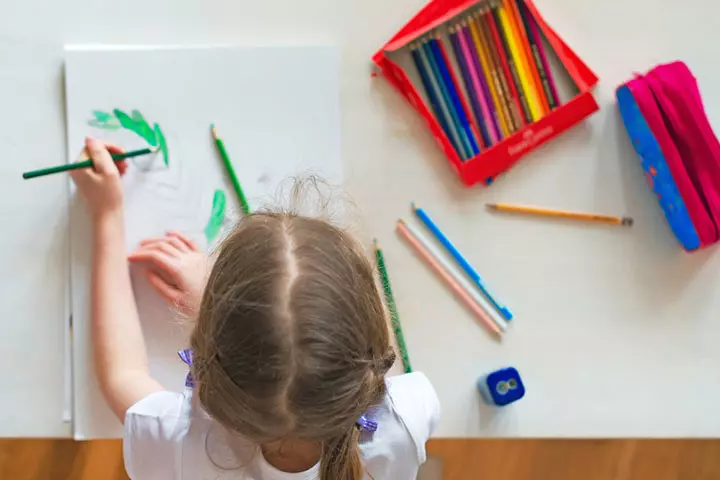
Image: IStock
As your child practices writing, it is important to teach them where to place the paper (6).
- While writing, ask your child to place the paper on the left side, as it will help them see it clearly even as they write.
- Once your child has finished writing through an entire line on the paper, their hand should either be towards their left on the middle of the line or directly in front of it.
- Having their hand in such a position will help them move it more naturally and keep their wrist straight. It will prevent any smudging and also help them see what they are writing.
8. Teach Your Child To Use The Right Hand:
Even though your child is left-handed, they can still use the right hand to help them write properly.
- While writing, you can teach them to stabilize the paper by using the right hand.
- The more your child stabilizes the paper and keeps it steady, the better they will be able to write.
- While this kind of coordination and orientation might take some practice and adaptation time, make sure they stay consistent and do not give up.
9. Place Books Above Or On The Right Of The Writing Paper:

Image: IStock
If your child has to copy out something while writing, make sure the space from which they are copying is kept at the right position.
- The book from which they are copying should either be placed slightly higher than the level at which they are writing, else should be on their right side.
- It will help your child to see what they are copying, and they will not have to bend down.
- Make sure that your child always follows this practice and does so even when they are at school.
10. Forming The Letters:
In most cases, writing the letters and forming them is almost similar between left-handed as well as right-handed children (7).
- Teach your child to write the letter ‘o’ in the same way that right-handed children do, in an anti-clockwise style.
- It will help them write quickly and more legibly.
- By writing using the left hand, they can pull the lines on their letters a little backward and be able to cross them better, as in the case of ‘t’ ‘f’ and others. Your left-handed child will be able to do so from the right direction to the left, instead of pushing the lines from left towards right.
Things To Remember
- Whether your child is left handed or right handed does not matter and will not affect their academic capabilities. The key is to ensure that they have enough practice, and you teach them all the right techniques.
- When your child is still learning how to write, try and encourage them to practice holding the pencil in a proper way. The key is first to let your child perfect the art of pinching the pencil between their thumb and the index finger.
- A short non-pencil tool will help them practice the hold better.
Frequently Asked Questions
1. Do left-handed children have a more challenging time writing?
Since languages such as English are written left-to-right, they may be more difficult for a left-handed person. This is because a right-hander writes by pushing the pen/pencil away from their body, whereas a left-hander writes by pushing the pen/pencil toward their body (8).
2. What are the advantages of being left-handed?
Left-handers are found to be more adaptable since they have to navigate through a world suited for right-handers. They also tend to perform better in sports (9)
3. Why are some children left-handed?
Several theories exist on why some children are left-handed. Some researchers believe a child may be left-handed due to genetic factors or from copying their parents’ actions. Others believe environmental factors such as hormone exposure during fetal development may contribute to a child being left-handed (10).
This post on how to teach a left-handed child to write will surely be helpful to you when you are planning to teach your little one the same. It is important for you to remember that you should not look at your child differently just because they are left-handed and support them instead. Make sure that they practice enough and are comfortable in writing that way. You can sit down with your child while teaching them these things so that you can explain to them better and also encourage them.
Infographic: Famous Left-Handed Individuals And Their Achievements
Left-handed individuals, who constitute only 10% of the population, have made significant contributions in various fields. This infographic showcases some of the most notable left-handed individuals and their impressive accomplishments, including famous artists and successful business leaders. Take a look at it and share this information with your children as well.

Illustration: Momjunction Design Team
Illustration: How To Teach A Left Handed Child To Write?

Image: Stable Diffusion/MomJunction Design Team
Personal Experience: Source
MomJunction articles include first-hand experiences to provide you with better insights through real-life narratives. Here are the sources of personal accounts referenced in this article.
I. Never for a left-handed child to be right-handed.https://wasioabbasi.wordpress.com/2011/08/08/never-force-left-handed-child-to-be-right-handed/
References
- How Do I Know If My Child is Right or Left-handed?
https://primarilylearning.org/right-or-left-handed/ - When Do You Know Whether Your Baby is Right or Left-handed?
https://networksocietylab.org/when-do-you-know-whether-your-baby-is-right-or-left-handed/ - Hand preference.
https://www.rch.org.au/uploadedFiles/Main/Content/ot/InfoSheet_B.pdf - How should a right or left-handed person hold a pencil?
https://primarilylearning.org/pencil-grip/ - Handwriting Advice for Left Handers.
https://www.nhsggc.org.uk/kids/resources/ot-activityinformation-sheets/handwriting-advice-for-left-handers/ - Helping left handed writers.
https://www.surreycc.gov.uk/schools-and-learning/schools/at-school/extra-support-for-your-child/helping-your-child-at-school/helping-left-handed-writers - Letter formation guide for left handed children.
https://lefthandedchildren.org/products/letter-formation-htm/ - Teaching left-handers to write.
http://handedness.org/action/leftwrite.html - What Makes Left-handed People Unique?
https://intermountainhealthcare.org/blogs/what-makes-left-handed-people-unique - Left-handedness.
https://www.betterhealth.vic.gov.au/better-health-channel - Howard I. Kushner (2011); Retraining left-handers and the aetiology of stuttering: The rise and fall of an intriguing theory.
http://www.tandfonline.com/doi/abs/10.1080/1357650X.2011.615127 - Joo-Young Park and Soohee Park (2015); 3D motion analysis comparison of left handers’ wrist flexion and cutting accuracy according to scissors type.
https://www.ncbi.nlm.nih.gov/pmc/articles/PMC4395746/ - Holder PhD; Teaching Left-Handers to Write; Handedness Research Institute.
http://handedness.org/action/leftwrite.html - Handwriting Advice for Left Handers; NHSGGC.
https://www.nhsggc.org.uk/kids/resources/ot-activityinformation-sheets/handwriting-advice-for-left-handers/
Community Experiences
Join the conversation and become a part of our nurturing community! Share your stories, experiences, and insights to connect with fellow parents.
Read full bio of Dr. Neha Mehta
Read full bio of Debolina Raja
Read full bio of Harshita Makvana
Read full bio of Kavita Kankani







 Quick tip
Quick tip









